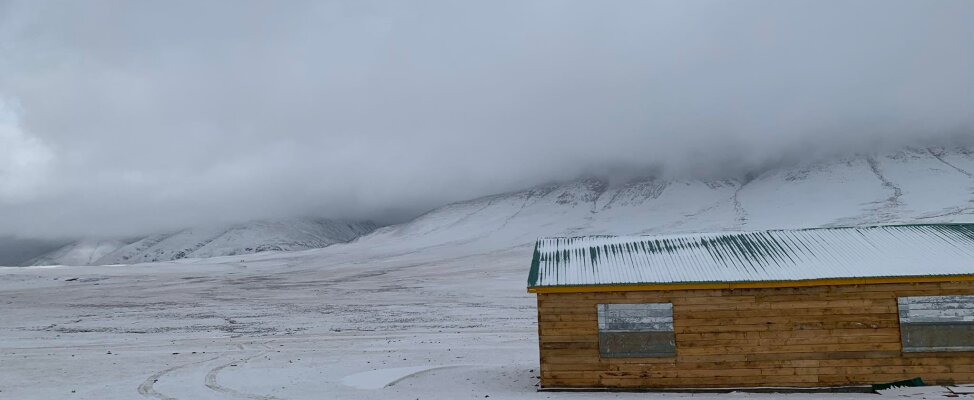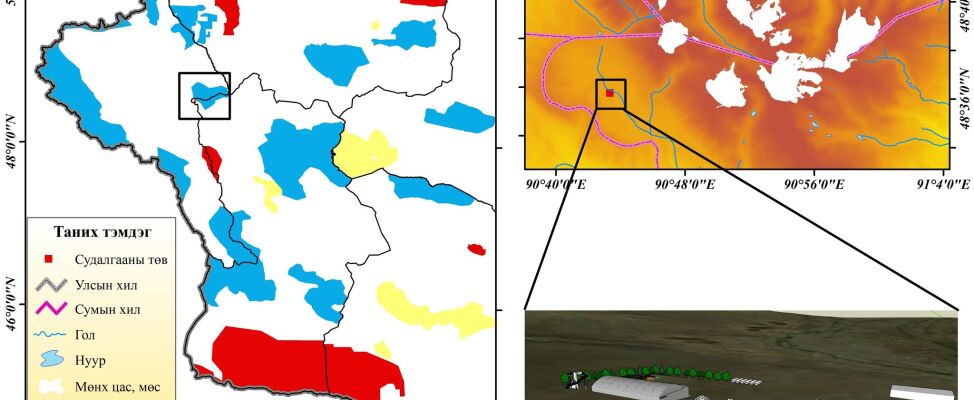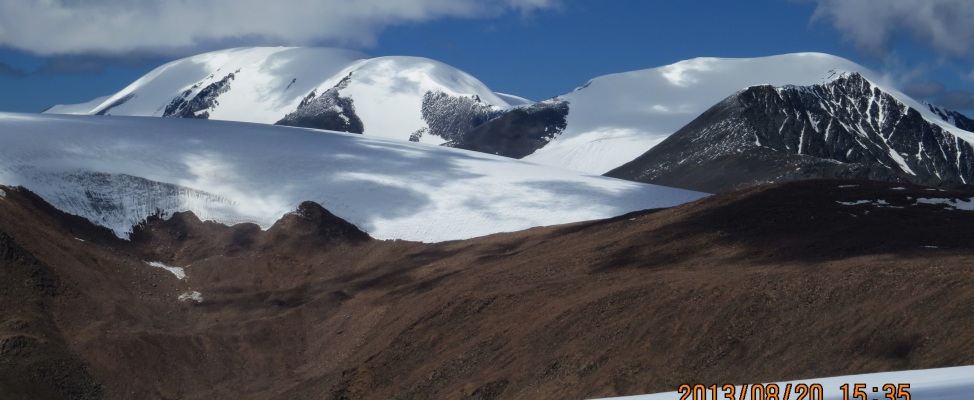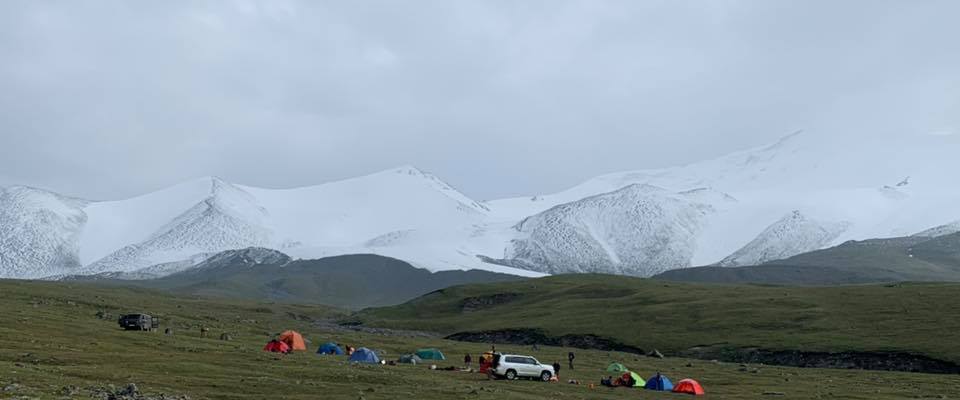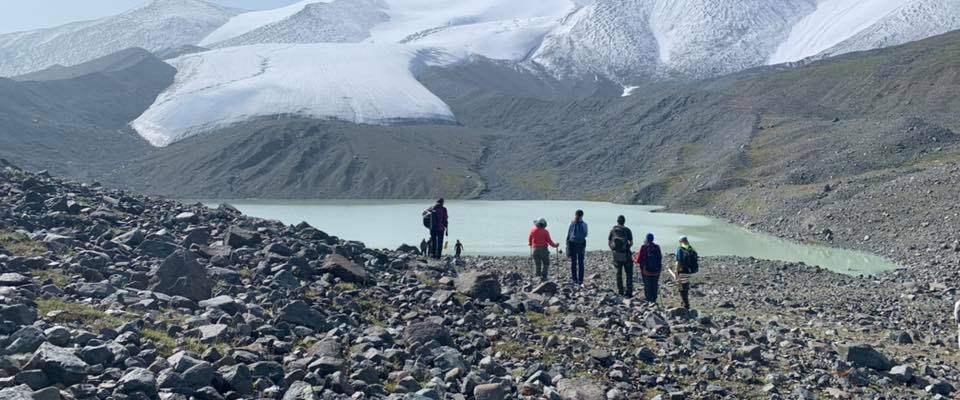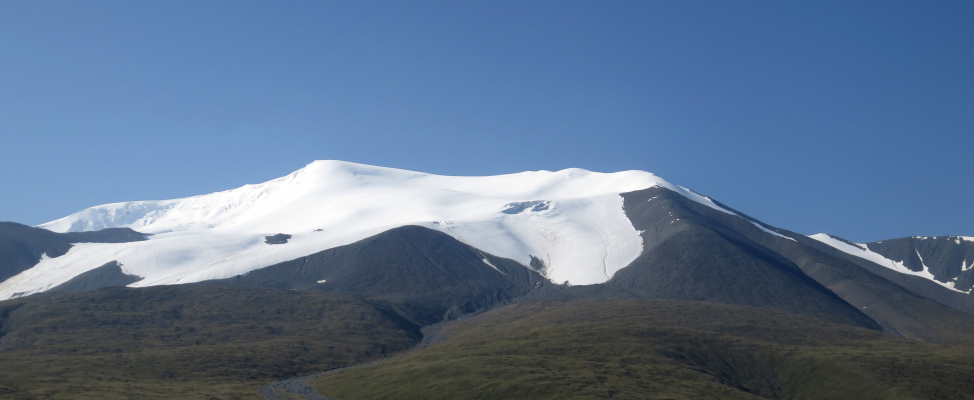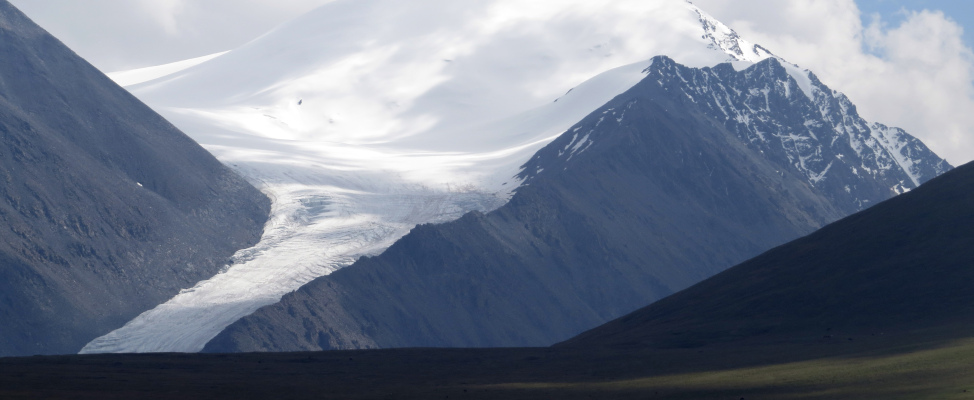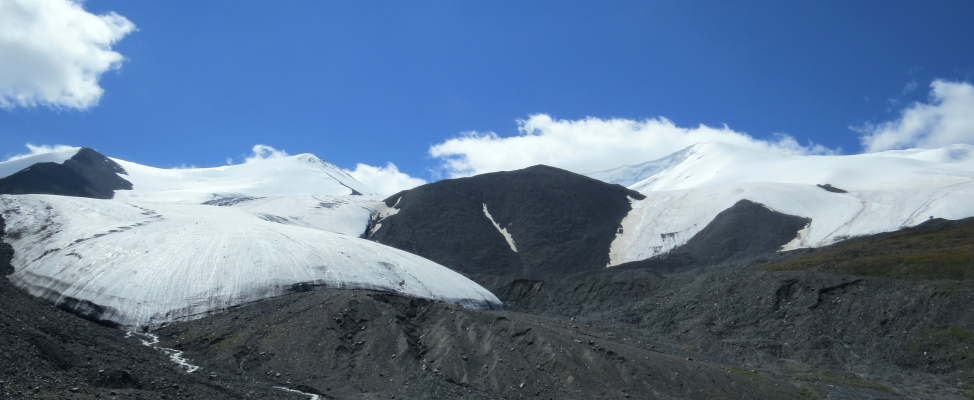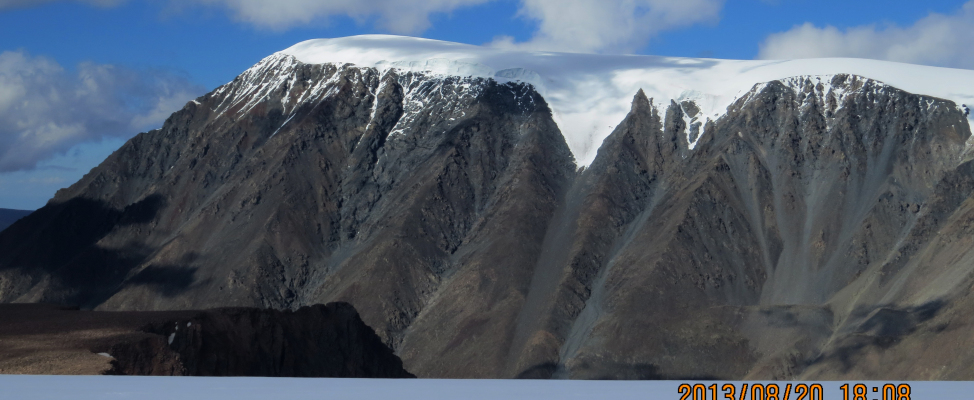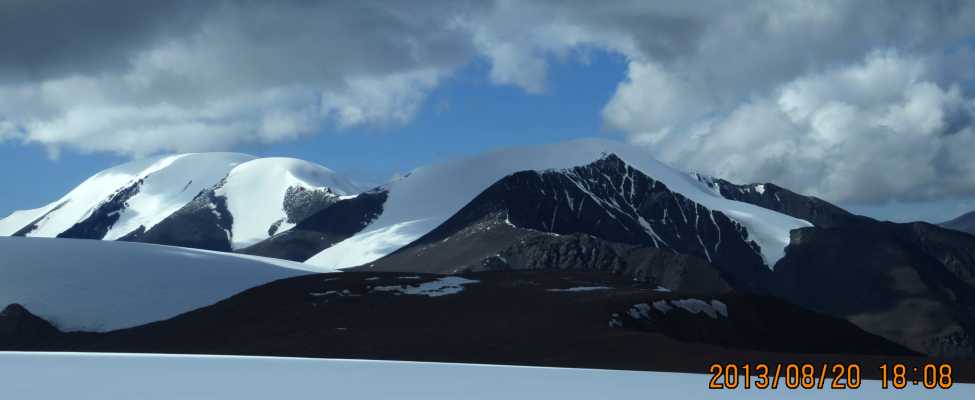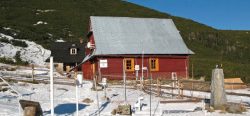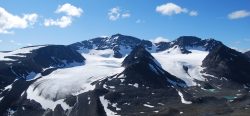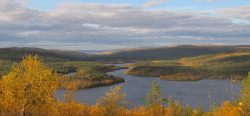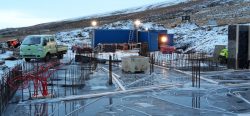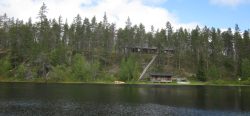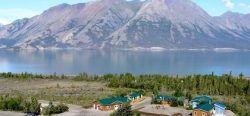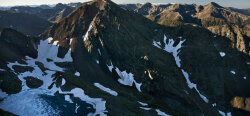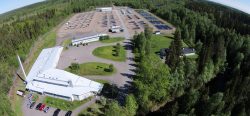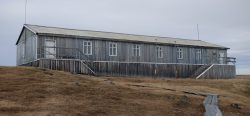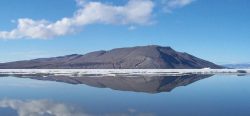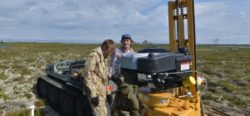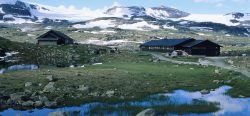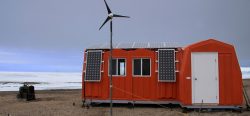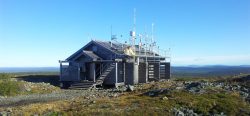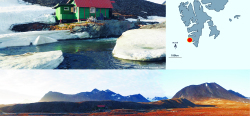STATION NAME AND OWNER
Tsambagarav Research Station is a center for glaciological and alpine research at Khovd Branch School of National university of Mongolia, Mongolia, and hosted by the university’s Department of GeographyThe study of the Earth, such as places, landforms, people and processes by which the Earth changes over time. Geography is divided into two main branches: human geography and physical... More and GeologyThe study of the solid Earth, rocks and processes by which rocks form. 'Geo' is derived from the Greek word for Earth.... More.
LOCATION
Tsambagarav Research Station is located at 2747m a.s.l. in the high-alpine Tsambagarav and Tsast Mountains, western Mongolia. It is Mongolia’s only research station in a high alpine environment surrounded by glaciers. The nearest settlement is the Erdeneburen soum (village) 70 km southeast of the station. And Altantsugts soum of Bayan-Ulgii aimag 50 km northeast of the station.
There is a mountain tourist camp (Tsast ) 4 km from TRS.
BIODIVERSITY AND NATURAL ENVIRONMENT
Tsambagarav Research Station is surrounded by Mongolian Altai highest mountains and several glaciers, and it is embedded in a time-machine like natural laboratory since climateThe average weather we would expect over a long period of time (seasons, years, decades). Climate varies from place-to-place across the Earth. Climate is determined by long-term (over at least... More warming is more pronounced in the ArcticDefinitions of the Arctic vary according to environmental, geographical, political, cultural and scientific perspectives. Some scientists define the Arctic as areas having a high latitude, long winters, short, cool summers,... More (“ArcticDefinitions of the Arctic vary according to environmental, geographical, political, cultural and scientific perspectives. Some scientists define the Arctic as areas having a high latitude, long winters, short, cool summers,... More Amplification”). This fuels a rapid decay of the small and vulnerable Mongolian Altai glaciers, and a rapid emergence of postglacial terrestrial and aquatic environments and associated changes in hydrological regimes and ecosystems can therefore be studied at and around TRS. Lake Nurganii, ca 1 km from TRS, is an exceptionally deep alpine lake (35km) that is seasonally ice covered and dimictic. PermafrostPermafrost is frozen ground that remains at or below zero degrees Celsius (32 degrees Fahrenheit) for two or more years. It forms in regions where the mean annual temperature is... More is in the area is patchy, and vegetation ranges from high-alpine floraThe plants that live in a particular region, habitat or time (such as geological period like the jurassic). For animals, we use the term fauna, and to collectively refer to all... More. In Tsambagarav mountain, there are Snow Leopard, Argali sheep, Ibex, Rock Ptarmigan, and Altai Snowcock. The Argali wild sheep found in the park is the largest in the world.
HISTORY AND FACILITIES
TRS was officially inaugurated in 2014 as an infrastructure for research in glaciologyThe study of glaciers. More and geomorphology at Khovd state University at the Department of GeographyThe study of the Earth, such as places, landforms, people and processes by which the Earth changes over time. Geography is divided into two main branches: human geography and physical... More. The 110,960 ha area was set up in 2000 to protect endangered species such as Snow Leopard, Argali sheep, Ibex, Rock Ptarmigan, and Altai Snowcock. Except for the wildlife, the scenic Tsambagarav Uul National Park has plenty of archeological sites and historical evidence including rock drawings, deer stones, and balbal stones.
GENERAL RESEARCH AND DATABASES
At TRS we conduct high quality, internationally recognised scientific research on Mongolian Altai alpine and glacial environments. We do both disciplinary and interdisciplinary research, with links to the effects of climate changeAccording to the United Nations Framework Convention on Climate Change, climate change is change in the climate of the whole Earth or a region of the Earth that is believed... More on the global cryospherePlaces on earth where water is in its solid form, frozen into ice or snow. This includes polar regions but also high altitude areas (high mountains). In a region's winter,... More and with focus on Mongolian Altai glaciers.
Long term observations of watercourses and ecosystems are also carried out alongside long term observations of the changing state of glaciers. The data is made available with open-access through different databases.
TRS is also a platform for field-based teaching, which is available for both international and national students and teachers. TRS also collaborates with non-academic actors who are active in the unique environment around the station, and communicates relevant research results to a wide range of target groups. We welcome researchers and academic courses from various subject areas and universities, academic workshops and meetings!
An important component of the research conducted at TRS is the measurement of Nurganii glacierA glacier is a large, persistent body of land-based ice that forms over many years where the accumulation of snow is greater than its loss (ablation). The ice in a... More mass balanceThe difference between the amount of ice a glacier gains in winter and the amount lost in summer. A glacier which is gaining mass has a positive mass balance: more ice is... More which will start in 2023 and is included in the World GlacierA glacier is a large, persistent body of land-based ice that forms over many years where the accumulation of snow is greater than its loss (ablation). The ice in a... More Monitoring Service’s database. The mass balanceThe difference between the amount of ice a glacier gains in winter and the amount lost in summer. A glacier which is gaining mass has a positive mass balance: more ice is... More dataset from the Nurganii glacierA glacier is a large, persistent body of land-based ice that forms over many years where the accumulation of snow is greater than its loss (ablation). The ice in a... More, and its measurements have helped shape a comprehensive knowledge of the interaction between the glacierA glacier is a large, persistent body of land-based ice that forms over many years where the accumulation of snow is greater than its loss (ablation). The ice in a... More and climateThe average weather we would expect over a long period of time (seasons, years, decades). Climate varies from place-to-place across the Earth. Climate is determined by long-term (over at least... More, local temperatures, and precipitation changes, which together play an important role in our understanding of glacierA glacier is a large, persistent body of land-based ice that forms over many years where the accumulation of snow is greater than its loss (ablation). The ice in a... More dynamics.
HUMAN DIMENSION
The nearest village is Erdeneburen sum of Khovd aimag, inhabited by 60 km, mainly by the ethnic group Uuld people. The north part or the station Altantsugts sum of the Bayan-Ulgii aimag, with mainly kazak people. There is permanent population living in the area in summer, mainly local herdmen. The population of Erdeneburen sum is 2426, of which more than 300 people live in Namarjin bag.
ACCESS
Travel to TRS is recommended via Khovd and Ulgii. Khovd and Ulgii are reached by car and plane from Ulanbaator. From Ulgii aand Khovd the station also can be accessed by rental cat and bus from Khovd (c130 km), from Ulgii city 135 km. Bayan-Olgii, 1 hour away from Hovd province. Walking and horse riding are available from the research base.
FILM
